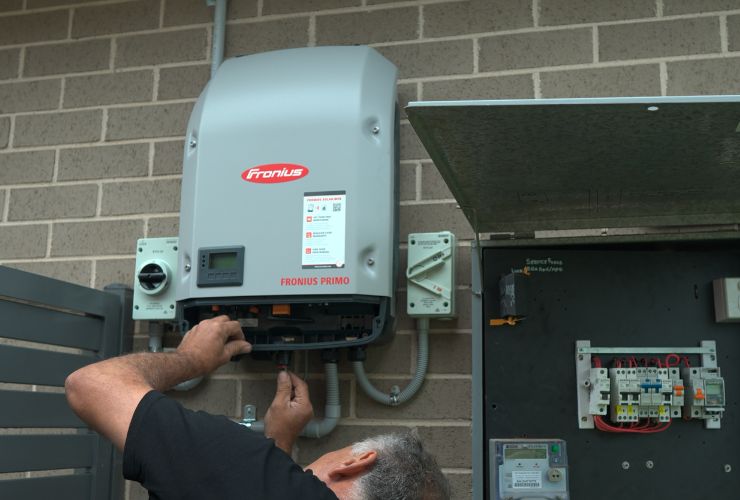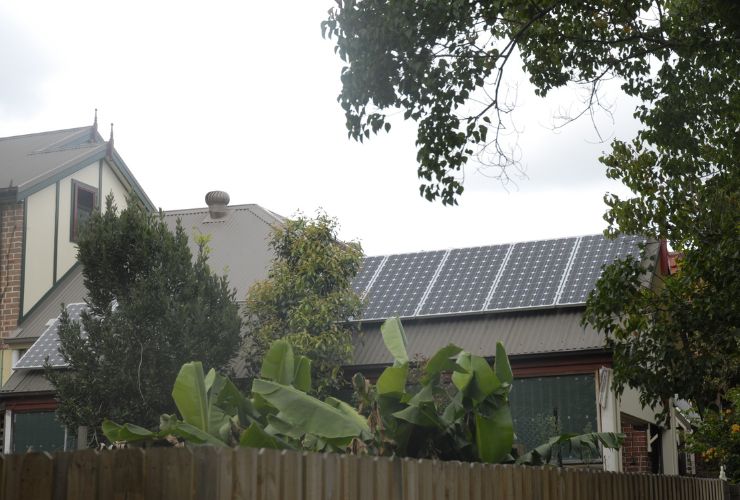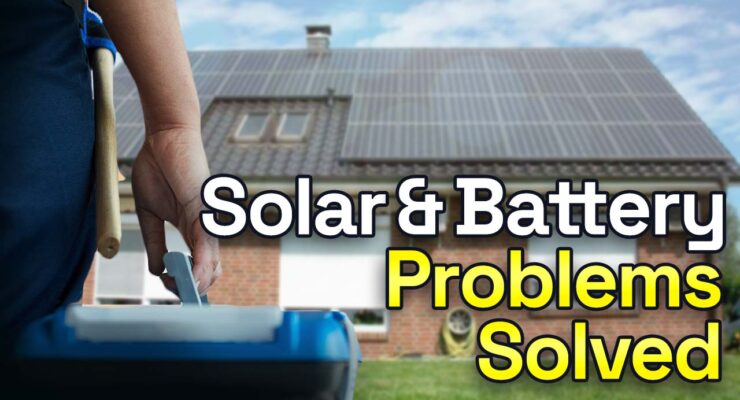Fast read
Solar systems are an excellent investment for everyone, but sometimes things can happen. You may encounter a few issues throughout the lifetime of your solar system.
If you notice a problem with your solar system or it is not performing to its rated output, you can take a few simple steps to try and identify the issue.
For example, obstacles such as trees or debris between the panel and the sun can decrease output. Check the breaker switches which manage the flow of electricity in your home.
Check the inverter, which turns the DC electricity to AC electricity so you can use the electricity in your home. If you come across an issue with your solar system and it does not fall under one of these categories contact a local solar professional.
What to do when your solar system stops working?
Solar and battery systems are an excellent investment for everyone, but sometimes things can happen. You may encounter a few issues throughout the lifetime of your solar system, but there are always solutions. If you notice a problem with your solar system or it has stopped working at its rated capacity, then these are a few steps you can take.
Check your solar system or battery monitoring
The first step should be to open your monitoring portal to check the system’s performance.
How much is it underperforming, and how long has this occurred? Many monitoring software packages will also send alerts via SMS or email if something is wrong. They also register the issue within the monitoring portal as well. So look for a list, register or alerts to give you some information on what could be wrong.
Check the inverter
Your inverter solution is the brains of the solar system. This device turns DC electricity into AC electricity so you can use the electricity in your home. It also monitors, records and transmits performance data to the inverter website and monitoring portal.
If the light is green, usually it means everything is working well. An issue arises if it is yellow, red, orange, or flashing. Furthermore, an error code or message may also be displayed on the inverter’s screen.
You can check the user manual that your installer would have provided or the internet (look for the error code) to check the error message and follow the suggestions to overcome or identify any fault.
If you can’t resolve the issue, we suggest contacting your solar installer or the inverter manufacturer.

Check the safety switches
It could be a breaker switch if your solar system is not working entirely or is down by half or one-third in performance if one of the system strings of panels has an issue.
The breaker switches are what manage the flow of electricity in your home. These switches can turn off automatically because of electrical surges, overloads, or other glitches in the system.
If they do get turned off, your solar system cannot provide electricity to your home from that part of the system, from one string to all panel strings. This means you will not generate solar energy at all, or at a reduced output, and your electricity bill will increase sharply.
How can you fix a tripped safety switch?
Simply flipping these switches back on could fix the issue. If the switch flips back and goes off again immediately or a short time later, then there is a serious issue and do not try to turn the switch back on again.
If you turn the switch back on, it stays in that position, but the solar electricity generation does not come back, contact your solar installation company for an after-sales visit.
The same applies to any safety switches associated with your battery storage. If it goes off again after you try resetting it, call in the professional to make sure your solar system starts working properly again.

Check the solar panels, but never get on the roof
Solar panels provide you with electricity through sunlight. Therefore, the output will decrease if obstacles exist between the panels and the sun.
So, if you notice a reduction in the output of your panels, then make sure there are not any new obstacles affecting your panels. This could be a tree growing and overshadowing the panels or accumulating debris on the panel, such as leaves, bird droppings, or possibly panel damage from a heavy hailstorm.
Trimming the branches back could be an easy fix if the issue is a tree growing too tall. If the issue is debris, contact a professional to clean your solar panels. If the issue is a damaged panel, contact your solar company to come out to assess and repair it.
Shaded panels also can void panel warranties – so this is a real issue you must attend to.
Regarding being able to assess the panels, we NEVER recommend that homeowners climb on their roofs. Sometimes panels can be accessed quickly and safely if on a flat roof. If your panels can not be seen clearly and one would need to use ladders to assess them, then this is a job for the professionals.
Improving monitoring
Solar meters are used to measure the production of your solar power system. You can then use this information to identify trends and output patterns to highlight when there could be a potential issue. If your solar metre is not identifying an issue, but you notice your system’s output decreasing, there could be an issue with your monitor system.
Contact the manufacturer of the solar inverter or your original solar installer. Calling the original installer is better because they know the system’s layout, cable run, and other details. These professionals will be able to assess the problem and provide a solution to make sure your solar system is working correctly again.
That’s why we say get a local company to install your system in the 1st place, as after-sales service is an important part of the solar & battery journey.
If you encounter an issue with your solar panel system that does not fall under one of these categories, still contact a solar professional. We are discussing brown spots on a panel, shattered glass or overheating inverters in other FAQs.
What do I do if my original installer has disappeared?
If the original company that installed the system is no longer around, we recommend you seek a local solar company to organise the inspection. If you are unsure about this, you can check the status of your solar company by doing an ABN business search on the ASIC company finder.
This new local solar company was NOT responsible for the installation, so they must charge for the time to come out. Also, if they notice shortcomings in the installation, please do not take out your frustration on the system inspector, as he will mention the deficiencies.
